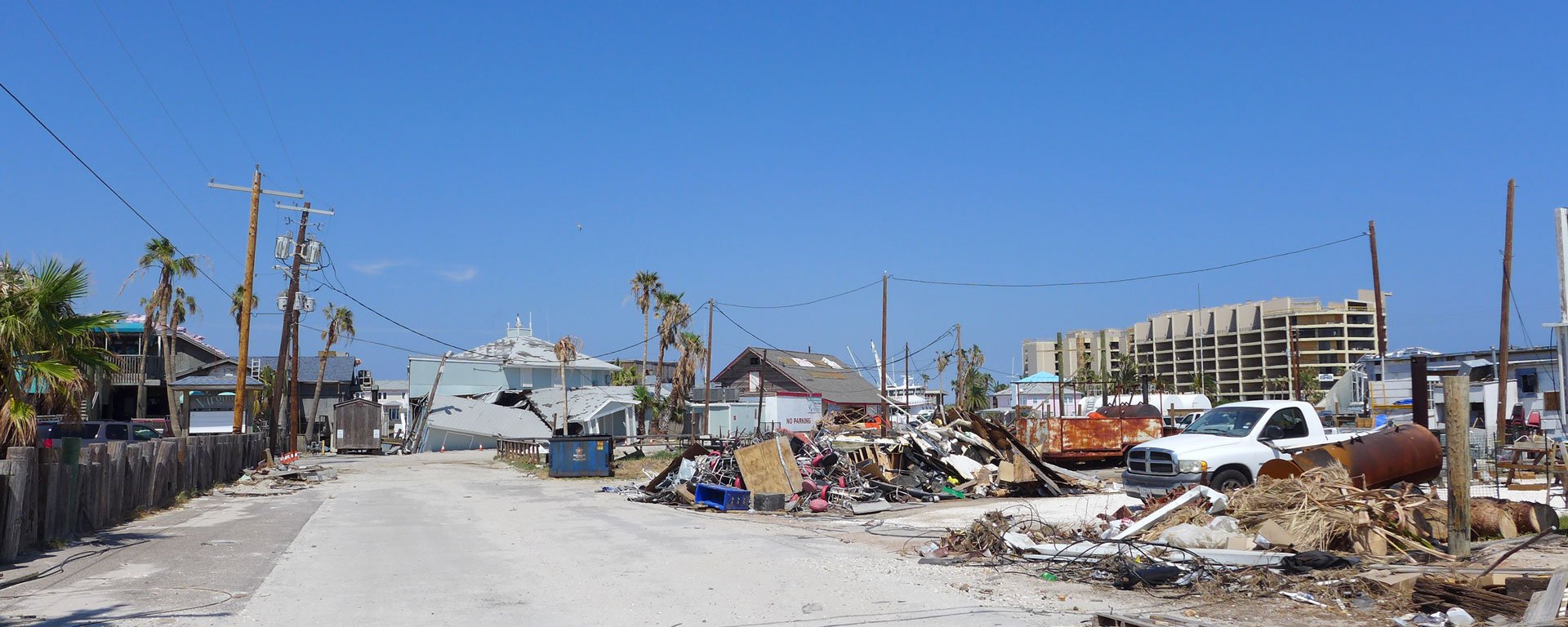As Hurricane Season Begins, Texas Sea Grant Reminds Citizens to Be Prepared
The Atlantic hurricane season began June 1 and runs through Nov. 30. The Texas Sea Grant College Program is reminding…
Jul 9, 2025
4 minutes

Extension Agent, Texas Sea Grant
The Atlantic hurricane season began June 1 and runs through Nov. 30. The Texas Sea Grant College Program is reminding Texans, especially those along the coast, to prepare before a storm approaches.
According to the National Oceanic and Atmospheric Administration’s outlook, there is a 60% chance of an above-normal season, with predictions of 13 to 19 named storms, six to 10 hurricanes, and three to five major hurricanes (Category 3 or higher). These forecasts are influenced by factors such as record-warm Atlantic sea surface temperatures and a transition from El Niño to neutral or La Niña conditions, which are conducive to increased hurricane activity.
Texans should stay alert and take proactive steps early in the season. Texas Sea Grant is continuing its outreach to coastal residents through education, planning resources and public information campaigns.
How to Prepare
Texas Sea Grant recommends several actions to help households prepare before a storm threatens the area:
- Make an emergency plan: Every household should have a clear plan for where to go and what to do if a hurricane threatens the region. This includes knowing your evacuation zone and practicing routes with all family members, including pets.
“Start with a solid plan and make sure to share it with your loved ones,” said Catherine Weaver, community disaster program manager for the Texas Gulf Coast Region Red Cross. “For example, if you live in an evacuation zone and plan to leave, know your evacuation route in advance, what road to take, where you’re headed, and your estimated timeline. Share these details with family or friends so that, in the event of an emergency, someone knows where you are and can help if needed. If you plan to stay, let others know as well. In the worst-case scenario, having a known location will help first responders or loved ones begin looking in the right place.” - Build a go-bag: Create a portable emergency kit with enough supplies to last at least three days and up to one month. Items should include:
- Water for at least three days
- Nonperishable food
- Medications
- Important documents
- Flashlights and batteries
- Phone chargers
- Hygiene items
- Necessary supplies for pets
Weaver highlighted the importance of including medications and key records.
“People often pack for just a day or two, but it’s wise to prepare for a minimum of a month, especially if road closures or extended power outages prevent your return. Also include important documents like insurance papers, birth certificates, a will, and medical information, and a list of emergency contacts.”
- Stay Informed
During a disaster, timely and accurate information is critical. Sign up for local emergency alerts and weather notifications. Keep a battery-powered NOAA Weather Radio handy, and follow updates from your local emergency management office and the National Hurricane Center.
“Stay tuned to local news, weather stations and official emergency management updates,” Weaver said. “The Red Cross Emergency App is also a powerful tool, it provides:
- Real-time alerts based on your location
- Weather updates and warnings
- Built-in safety plans you can customize
- Information on open shelters during disasters”
You can find the app in your phone’s app store or use this flyer (English and Spanish) for instructions.
- Know Your Risk
View this flood map from Chron Houston, supported with information from FEMA and Esri, to determine if you are in a flood zone.
Want to Help Others?
If you’re looking for ways to support your community during emergencies, the Red Cross welcomes volunteers year-round.
“We’re always looking for volunteers who are ready to support their community or even deploy to help other regions in need,” Weaver said. “Visit redcross.org/volunteer to learn more and get started. Whether you can help with sheltering, disaster response, logistics or community outreach, there’s a role for everyone.”
The Red Cross is one of several organizations involved in hurricane response and relief efforts.
Texas Sea Grant Resources
Texas Sea Grant offers a wide range of hurricane preparedness resources for the public, including printable guides, educational videos, and technical assistance for homeowners, local governments and coastal businesses.
The program’s Hurricane Preparedness page provides step-by-step guidance on how to protect homes, plan for evacuation and recover after a storm. Residents can also download the updated Texas Homeowner’s Handbook to Prepare for Coastal Natural Hazards, which includes information on flood risk, wind damage and financial preparedness.
Additional resources include:
- Information for fisheries and aquaculture operators on minimizing storm-related damage
- Spanish- and Vietnamese-language materials for broader community outreach
- Risk management tools for small coastal businesses and marine operations
Preparedness is key to reducing the impact of hurricanes on people, property and communities. With forecasters predicting a busy season ahead, coastal Texans are encouraged to take action now.
